

The 9th Exhibition: 2016.4.16 - 2017.1.3
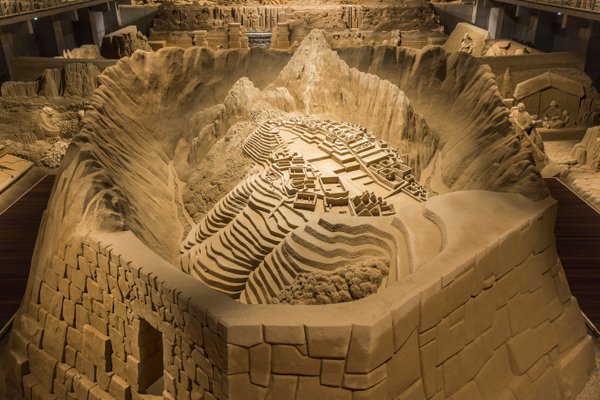
Machu Picchu, City in the Sky
Machu Picchu is located at a height of 2430 meters on a mountain ridge along the Urubamba Valley in the Southeast of Peru. The American archeologist Hiram Bingham explored the area 100 years ago and became aware of the existence of Machu Picchu that became known all over the world. As its shape is invisible from the mountain foot, but can be seen only from the sky, Machu Picchu is called the city of the sky. It was built by the Inca Empire that flourished in Cusco, Peru. The terraced fields that account about the half of the 5 ㎢ large area were used as agricultural land, while the approximately 200 buildings were used as temples, palaces and residents. But since the Inca civilization did not have letters, it is veiled in mystery when and for what purpose the buildings were constructed. In present times, the city is a major tourism spot in South America and attracts crowds of tourists that search for its mysterious stone ruins and beautiful scenery. In 1983, Machu Picchu and the historic district of Cusco together were registered as world heritage.
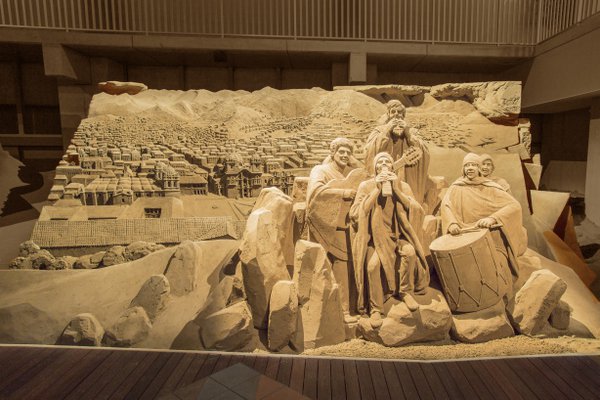
Townscape of Cusco
Cusco, the capital of the Inca Empire, is located in the highlands at a height of 3400 meters. It is even 1000 meters higher than Machu Picchu that is known as the city in the sky. It is said that the old town was designed that it looks like the shape of a puma when seen from the sky. The roofs are unified to a reddish-brown that covers the whole townscape. Together with the elaborate stone wall that was built during the Inca period, they tell us about the city's shape in those days. Further, the Plaza de Armas in the center of the town, and the Santo Domingo Church that was built on the foundation of the Qurikancha Temple from the Inca period, let us feel the appearance during the Spanish colonization period. It is assumed that the Inca Empire with Cusco in the center was built by the Quechua, an indigenous people of the Andes with colorful folk costumes characteristic for them. Also the traditional folklore music is originated in the Andes and its representative song "El Condor Pasa" is widely known.
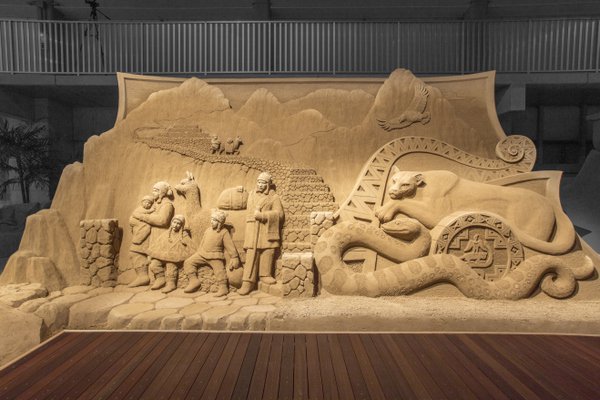
Inca Trail and Andean Nature
The Inca Trail was built during the time of the Inca Empire. Beginning in Cusco, it has a total length of over 40,000 km and extends through the whole huge country. Through this traffic network it became possible to submit orders and information to every nook and corner of the country, and since it was also used as a transportation route for goods, it played a major role in the development of the empire. Llamas, the characteristic animals of the Andes, were used for the mass transport on the Inca Trail. They not only have the stamina to resist the lack of oxygen in the highlands, but also can walk for long distances while carrying heavy goods on their backs. Beside them, the Andes are the habitat of various other animals like the Andean condor, the puma or the Andean mountain cat. Among them, the Andean condor also appears in the Andean myths where it plays an important role as sacred animal. It is truly like a symbol for the Andean nature.
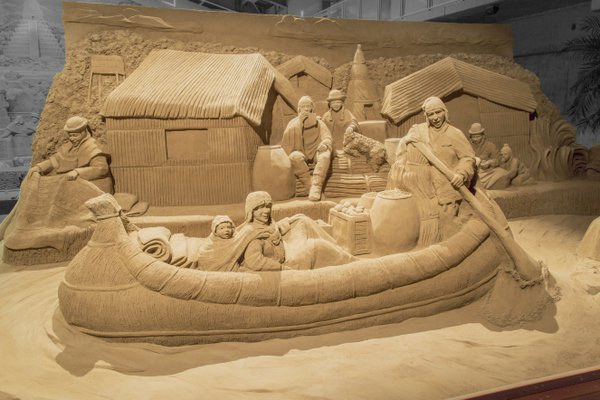
Titicaca Lake and Native People
The Titicaca Lake, the biggest lake in South America, is located at the border of Peru and Bolivia. Almost at the center of the Andes at a height of 3812 meters above sea level, it is the highest place in the world with shipping activities. Beginning with the "Island of Sun" that is worshiped as the sacred origin of the Inca Empire, there are lots of islands in this lake with various ethnic groups living on it. Among these are the Uros, living on an unusual floating island made of bundled up softstem bulrush. The people developed various cultures by using the plants growing in the lake and skilfully handling their floating islands. The blue of the sky and the lake, the yellowish floating islands, and the cheerful red and blue of the native dresses of the Uros people - the Titicaca Lake even in present days shows a scenery so beautiful that you might mistake it with a picture.
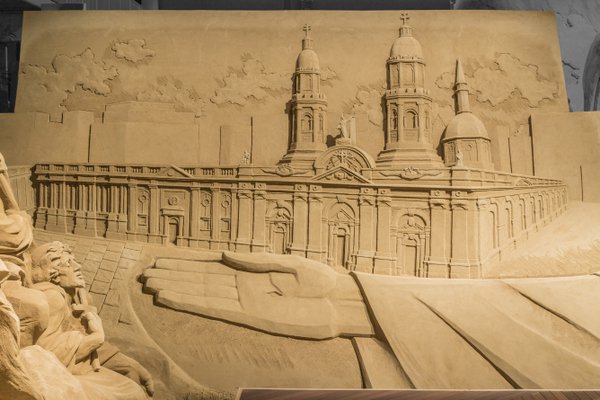
Santiago de Compostela Cathedral
The Santiago de Compostela Cathedral is the main church of the catholic country Chile. The dignified neoclassic building melts perfectly in the historic scenery of the old town and is swathed in a main-church-like serious atmosphere. The present appearance is a result of several reconstructions after earthquake disasters. The beautiful carvings everywhere from the pillars to the high ceiling, and the statue of the Virgin Mary resting in the silence are heart warming symbols for the Chileans with their deep faith. While the Chileans with their positive living attitude are silently praying in the church, the Plaza de Armas in front of the church is a relaxing square for the local residents and tourism spot that exudes a lively atmosphere. An important place where the history and culture of Chile are gathering.
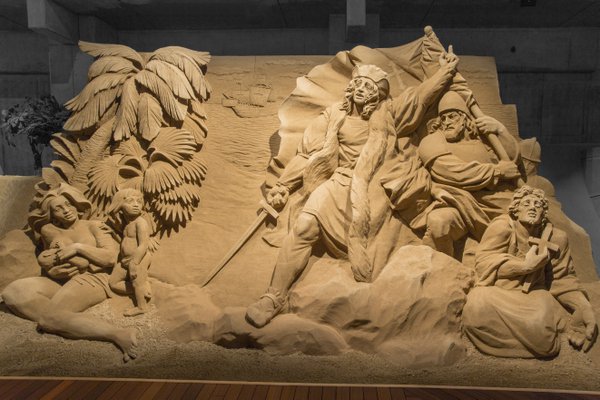
Discovery of the New World
The middle of the 15th century marked the beginning of the Age of Discovery. At those times, spices were very precious in Europe and the Portuguese routed around the Southern tip of the African continent to reach India. On the other side, the Spanish chose the west route suggested by Christopher Columbus to reach India and in 1492 finally arrived in the South American West Indies. This event is known as the discovery of the new world and gave rise to the development of the two American continents by the Europeans. It can be said that this was a big turning point in the history of the American continents where only native inhabitants had lived until those days. Soon, the Spanish explored the South American continent and as a result of the development of these unknown territories, they discovered the Inca Empire.
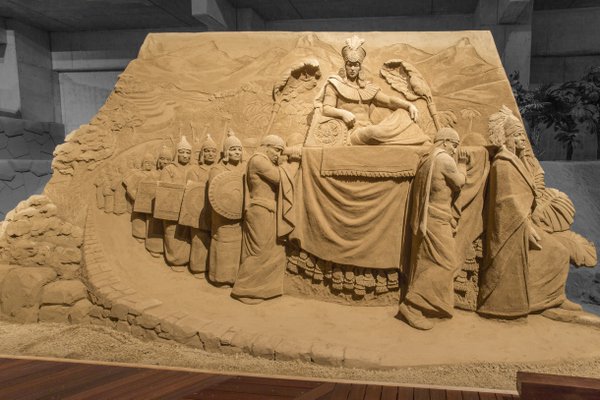
Inca Empire
The Incas had their beginning around the year 1200 as a tribe of the Quechua people. They started to rule the surrounding countries one after another and in the middle of the 15th century, their empire extended over the area of present Peru, Bolivia, Ecuador and Chile. In its golden age, the huge empire consisted of 80 different people and had a population of 16 million. The people worshiped the sun, and the emperor that was believed to be an incarnation of the sun, stayed on the top of all religious and political affairs. But with the death of the 13th emperor Atahualpa, the state began to decline and finally the Inca Empire collapsed. In recent years, the ceremony of praying for the sun god was revived as a festival. It tells us people living in the present about the glory of the empire in vivid colors.
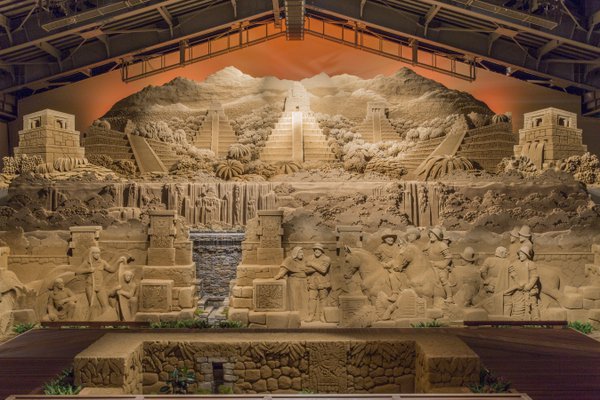
On the Search for Gold
The Conquistadores in the Age of Discovery had big dreams about golden and silver treasures sunken in lakes, and gold-ornamented buildings in golden villages. With hope and a sense of insecurity in their hearts, they stepped into the unknown world. While covering the fact that they were conquerors, the Conquistadores approached to the Indios. The Indios never before had seen men with white skin and therefore were cautious, but also got confused because the white appearance was similar to one of their highest-ranked deities. This backdrop was a major factor for the invasion by the Conquistadores that were represented by Pizarro. The armed Spanish soldiers followed, put knights with highly-developed firearms into action and conquered the empire in a short time. The invasion was so terrible that the Spanish by times even made use of the disparities between the different tribes and committed massacres. As a result, the Indio civilization in Latin America was destroyed. On the other hand, Spain acquired the gold of the new continent, flourished under the influence of the huge fortune and developed into a superpower.
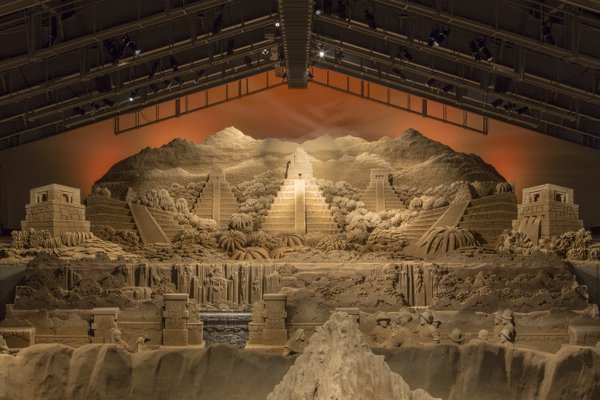
The Legendary Town of "El Dorado"
"There is a golden country on the other side of the sea..." This rumor attracted many explorers and has its roots in a secret ceremony that existed approximately until the 16th century in the Andes Region. Deep in the mountain recesses of Columbia at Lake Guatavita, the head of the Indios dusted gold dust on his whole body and went into the lake to offer up treasures and to pray. Treasures sunken in the lake and sparkling gold dust - the description of this gorgeous scenery was spread by oral tradition and in the twinkling of an eye became the legend of "El Dorado". Later, explorers and the Conquistadores from Spain landed one after another with ambitions to get hold of gold. Imagining the golden-colored world and only believing the one moment when they make a fortune, they got on the steep way through the Andes. The legend "El Dorado" that enslaved everyone became a part of history and with its countless mysteries, it is passed on up to present times.
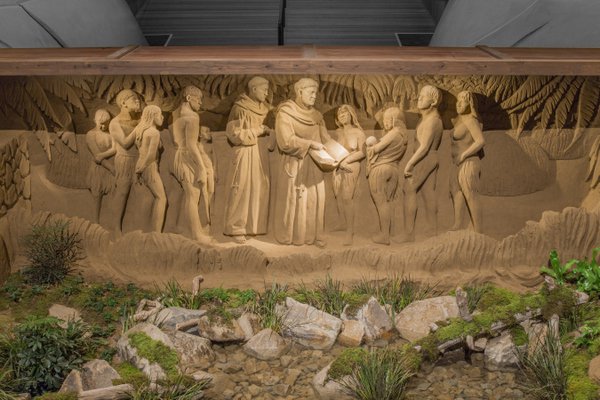
Propagation of the Christian Faith
The discovery of the new world by Columbus was the beginning of an unfortunate history of the Christian faith and South America. In the 15th century, the pope in Rome ordered the Spanish to spread the Christian faith and to reclaim territories. In the western world of those times, the missionaries were moved by the missionary thought that they had the right to spread their alleged superior civilization, and the duty to convert persons from other cultures. Refusing to convert was considered as a declaration of war, and for the indigenous people that even could not understand the language, the incidents were conquests in the name of missionary works. Further, the missionary works were justified by preaching the teaching of Christianity to the converted people and pushing the colonization in the name of protection. Thus, Christianity spread over all parts of the continent and the number of the indigenous people decreased steadily. In present days, the westernization of South America has reached a proceeded state and 70% of the people are Christians.
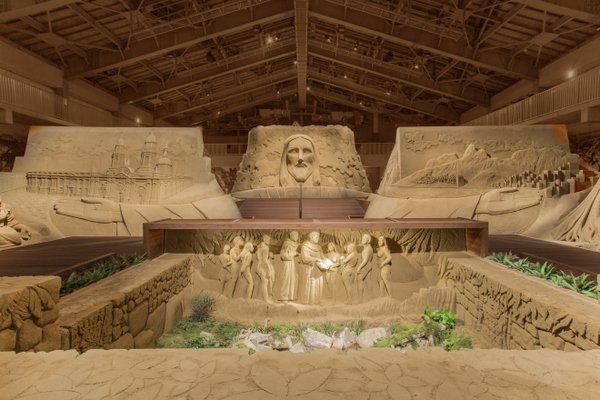
Christ the Redeemer Statue in Corcovado
Brazil had been a Portuguese colony for a long period of time until it became independent in 1822. The independence is an unforgettable and proud event for the people. Later in 1931, in memory of the 100th anniversary of the independence, the Christ the Redeemer statue was built. The big Christian population of Rio shows deep faith and affection for this statue also in present days. Its wide-opened hands express the warmness that is felt by people all over the world. This huge statue soaring into the blue sky is a great emotional support for the people and watches over the City of Rio from Corcovado Hill until the present day.
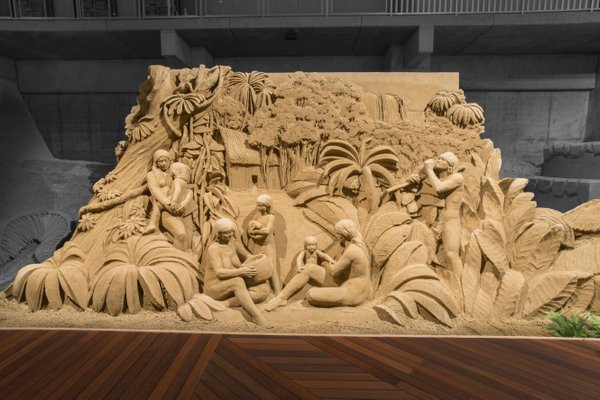
Iguazu Falls and the Indios
The Iguazu Falls are the biggest in the world. With an average flow of 65,000 tons water per second, they moisten the tropical rain forest where the Indios live together with various animals and plants. Because of the constant danger lurking from the jungle, the people acquired knowledge and adjusted their lifestyle in several ways. They remove poison from plants to eat them, and on the other hand, they use poison for hunting and as anesthetic. Also the hammocks they use to protect themselves from insects on the ground, and the weapons like the bow and arrow are survival techniques they perfected under the influence of the nature. Also the jewelry in their noses and ears as well as the characteristic folk costumes of every tribe are part of the identity. Although the invasion of the Western people during the Age of Discovery lead to a decrease of Indio people, there are tribes remaining until the present day. Also in present times, the Indios continue to build their original culture surrounded by a rich nature under the colorful rainbows over the Iguazu Falls.
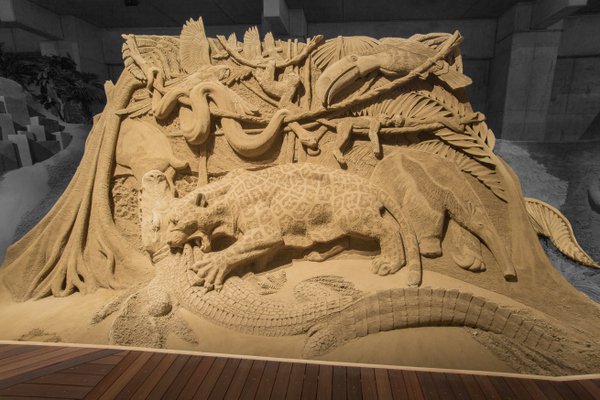
Animals of the Amazon
The Amazon is the largest tropical rain forest in the world. Beginning with Brazil, it extends over 9 countries and accounts for 50% of the rain forest of the world. The Amazon Basin has so much green that it is said to supply 1/3 of the world's oxygen. Further, the upright-grown large trees standing close together and the wet soil form an appropriate habitat for animals. And the characteristic South American aquatic and land animals continued their evolution to adapt to the environment. The jaguar, that even can climb up trees, is at the top of the food cycle, and can stride freely through the thicket. Further, the Toco Toucan with a beak so beautiful that it is even called jewel, and the colorful Macaw are drawing their circles in the sky. And even now new species are discovered in the Amazon Area, the treasure chest of living beings.
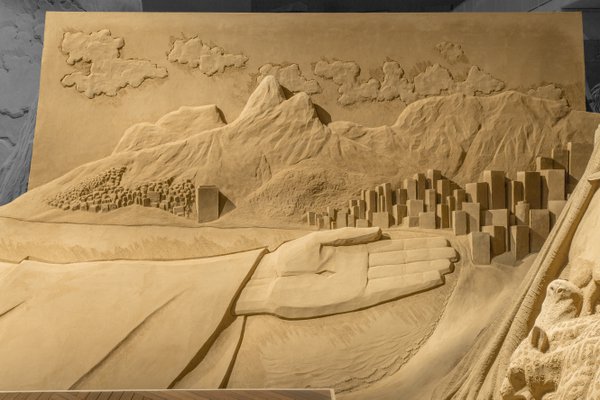
Ipanema Beach
The Brazilian seaport Rio de Janeiro is surrounded by some of the world's most beautiful beaches. Ipanema is a peaceful beach with an elegant atmosphere and faces an exclusive residential district. Being extensively used by the local residents, this beach has a different charm compared to the neighboring Copacabana. In front of Ipanema Beach is Revlon Beach with the symbolic Dois Irmãos (twin brother mountains) at its end that are soaring into the sky. Being famous as the stage of "The Girl from Ipanema", a famous song of the Bossa Nova genre, this area also shows an exceptional picturesque scenery when the silhouette of the mountain appears on the evening sun or with its contrast of the blue sky and white beach.
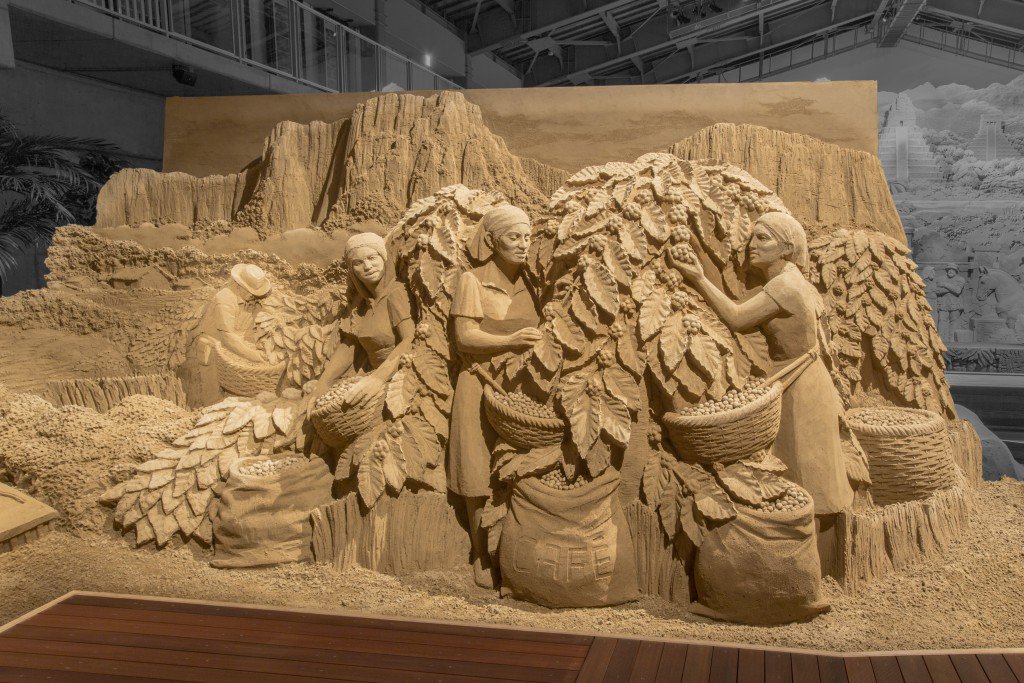
Angel Falls and Coffee Cultivation
In the first half of the 18th century, coffee and cultivation techniques were introduced in South America from Europe via the West Indies in the Carribean Sea. Soon, coffee became a major industry that supports the economy of the South American countries. Tropic areas with rainy and dry seasons are very suitable for coffee cultivation, and coffee grown in the highlands is supposed to be of a very high quality. The Guayana Highlands extend over 6 countries in the northern part of South America, and especially the Angel Falls in Venezuela are widely known. The aspect of the coffee plantation in the South American highlands is expressed in this work by the Angel Falls in the background and a coffee plantation in the front.
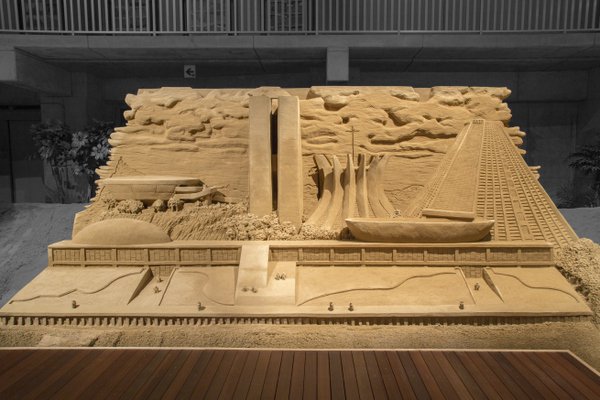
Modern Architecture in Brazil
In 1960, the new capital "Brasilia" was founded in a savage land of the Brazilian Heights. The conception for the transfer of the capital was set in the Portuguese colonial era and it took 200 years to be realized. While building this town from scratch, there was a strong will to sweep away old images and to create a new Brazil. Major buildings of the town like the National Congress building or the Metropolitan Cathedral of Brasilia were designed by Oscar Niemeyer. The usage of curves and geometry is characteristic of the design. The thoughts of the people looking forward to the development of a new Brazil can be felt in the neo-futuristic exterior.
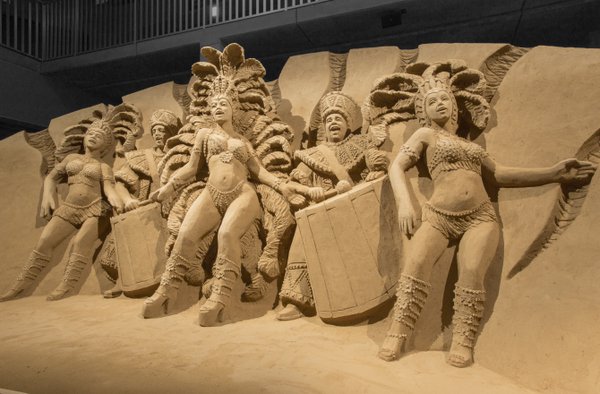
Carnival in Rio
The carnival of Rio de Janeiro in Brazil is held every year and its roots are said to go back to the year 1723. The carnival brought by the Portuguese settlers, and the Samba rhythm from the blacks who were brought as slavery workers to Brazil fused in the Rio Carnival. The Samba parade, the main event of the carnival, is a contest where teams compete in performance and dancing after passing a preliminary round. The dancers are called "Passista" and wear feathered-costumes showing much of naked skin. As the dances are individual plays, they dancers need improvisational talent and expressive power. The showy and thrilling Carnival in Rio is an expression of the positive Brazilian traits and the passion of the people. This festival developed together with Brazil, that in 2016 finally will be the hosting country of the first Olympic Summer Games on the South American continent.
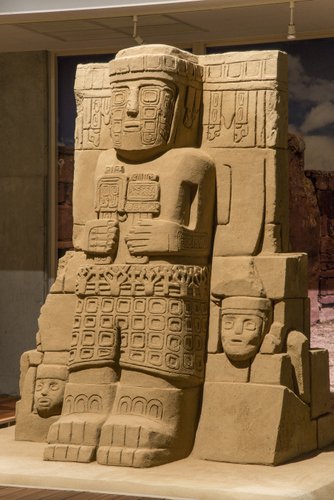
Monoliths: God Statues Standing Beside the Ruins
This god statue made of one piece of rock is located in the world heritage of Tiwanaku. The Tiwanaku culture prospered in the highlands of Bolivia near the Titicaca Lake for over 12 centuries since the 3rd century BC. The superior stone building techniques used for the construction of the famous "Sun Gate" and the temple group are supposed to have influenced the later Inca civilization. Pictures looking like men and mysterious icons of cats, snakes, condors and geometric lines are carved in the stone statues and walls of these historic ruins. Maybe the monoliths standing at the temple have protected this area all the time from ancient times up to today.
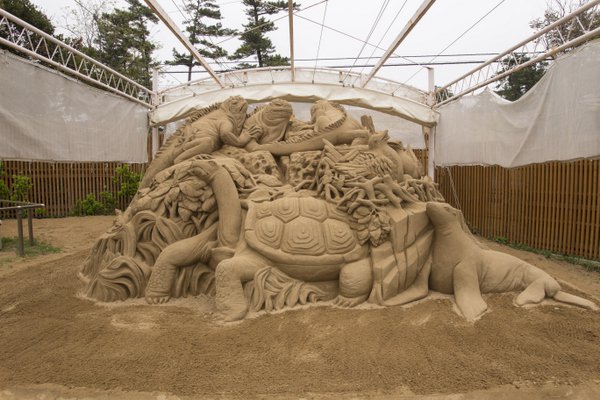
Animals from the Galapagos Island
The Galapagos Islands are volcanic islands 1000 km away from the Ecuadorian coast directly located under the equator. "Galapagos" is the Spanish word for giant tortoise. The Galapagos consist of many islands and reefs and harbour unique living beings that are isolated from all continents. The absence of big mammals that would be potential natural enemies is a major reason that the living beings on the Galapagos Islands could evolve without being extinct. Especially nearly all reptiles like the Galapagos giant tortoise are endemic species, and over the half of the birds like the frigatebird or the brown booby are precious species that only exist here. In 1835, Charles Darwin visited the islands and got hints for his theory of evolution from the ecosystem of the endemic species. The whole islands that are the home of these species, became subject to protection and research. In present times, also the surrounding ocean areas are certified as world heritage, and the ecosystem of the Galapagos Islands is carefully protected.
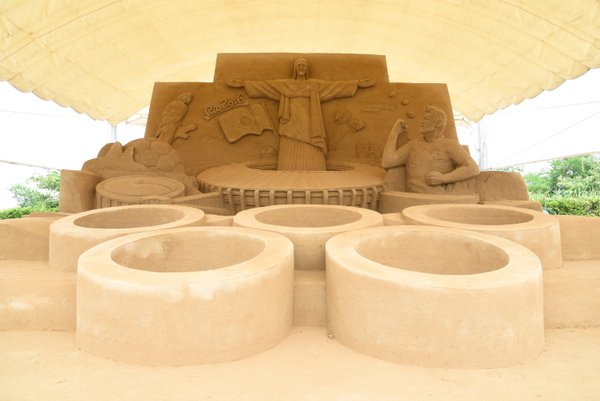
Rio de Janeiro
2016. Japan/Katsuhiko Chaen
